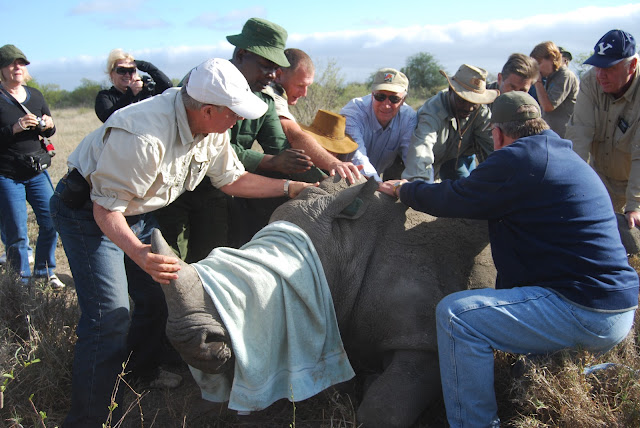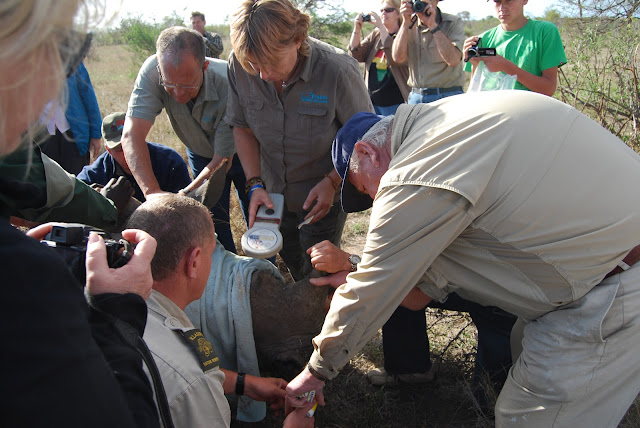Elder Jeffrey R. Holland ( a member of the Quorum of the Twelve Apostles) is here in Johannesburg for what they call “Area
Review”—he looks at what's happening throughout the 37 countries in the Southeast Africa Area to be sure that everything is moving along properly. The Area
Presidency has been preparing for this for weeks and there has been a lot of
tension in the offices. Elder
Holland has been here all week training local priesthood leaders and meeting
with different groups.
I have been
helping the Public Affairs office prepare for a very big event set for
Thursday. It was the launch of the
MormonNewsroom.ca.za –a website for all news media to go to for information
about the Church in Africa—with links to the Church’s official newsroom for any
answers to questions about the doctrine or organization. We rented a huge tent, prepared a
multi-media presentation with two big screens, sent invitations to all the big
wigs in the South Africa media world, prepared a luncheon and special gift bags for all. It was a BIG DEAL! On Wednesday, I was running back and
forth between the offices and the tent preparing lots of flowers, and I just
happened upon Elder Holland, Elder Clayton and Elder Renlund walking through
the parking area. It was a sweet
moment to shake their hands and speak briefly with an Apostle of the Lord. He was very kind and friendly.
Yesterday, Thursday, we were all invited to a special
devotional for employees and couple missionaries working in the Area Office,
where Elder Holland, Elder and Sister Whitney Clayton and Elder & Sister
Renlund spoke. Elder Clayton used
D&C 123:16-17 “…a very large ship is benefited very much by a very small
helm in the time of a storm, by being kept workways with the wind and the
waves. Therefore…let us cheerfully
do all things that lie in our power; and then may we stand still, with the
utmost assurance, to see the salvation of God, and for his arm to be
revealed.” He said it takes each of our small
parts to keep the huge ship of the Church on course and moving ever forward (at
an ever accelerated pace) in the storm of a turbulent world.
 Elder Holland said that, after the announcement a couple of weeks ago in General Conference of the change
in age of young missionaries, the Church would be creating 50 new missions and
there will soon be 80,000 missionaries throughout the world. He talked about the accelerated,
dynamic angle of progress of this Kingdom—beyond anything in history—ours is
the only dispensation that can say that the Gospel will never again be taken
from the earth. All prophets of
old knew that everything they were doing would lead to this time, to our
day. We bear a heavy responsibility
to carry the legacy of all who paid the price in previous dispensations. After the devotional, all were invited
to shake Elder Holland’s hand and at the end of the line, Dave and I had our
picture taken with him.
Elder Holland said that, after the announcement a couple of weeks ago in General Conference of the change
in age of young missionaries, the Church would be creating 50 new missions and
there will soon be 80,000 missionaries throughout the world. He talked about the accelerated,
dynamic angle of progress of this Kingdom—beyond anything in history—ours is
the only dispensation that can say that the Gospel will never again be taken
from the earth. All prophets of
old knew that everything they were doing would lead to this time, to our
day. We bear a heavy responsibility
to carry the legacy of all who paid the price in previous dispensations. After the devotional, all were invited
to shake Elder Holland’s hand and at the end of the line, Dave and I had our
picture taken with him. After the devotional, we had the media event, which went
well. I was working with
registration and missed the things happening in the tent, but heard that Elder
Holland gave a beautiful message there, as well.
After the devotional, we had the media event, which went
well. I was working with
registration and missed the things happening in the tent, but heard that Elder
Holland gave a beautiful message there, as well.
Lerato and me at the registration table--we were freezing cold! It's supposed to be springtime here, but winter is reluctant to leave.

















































